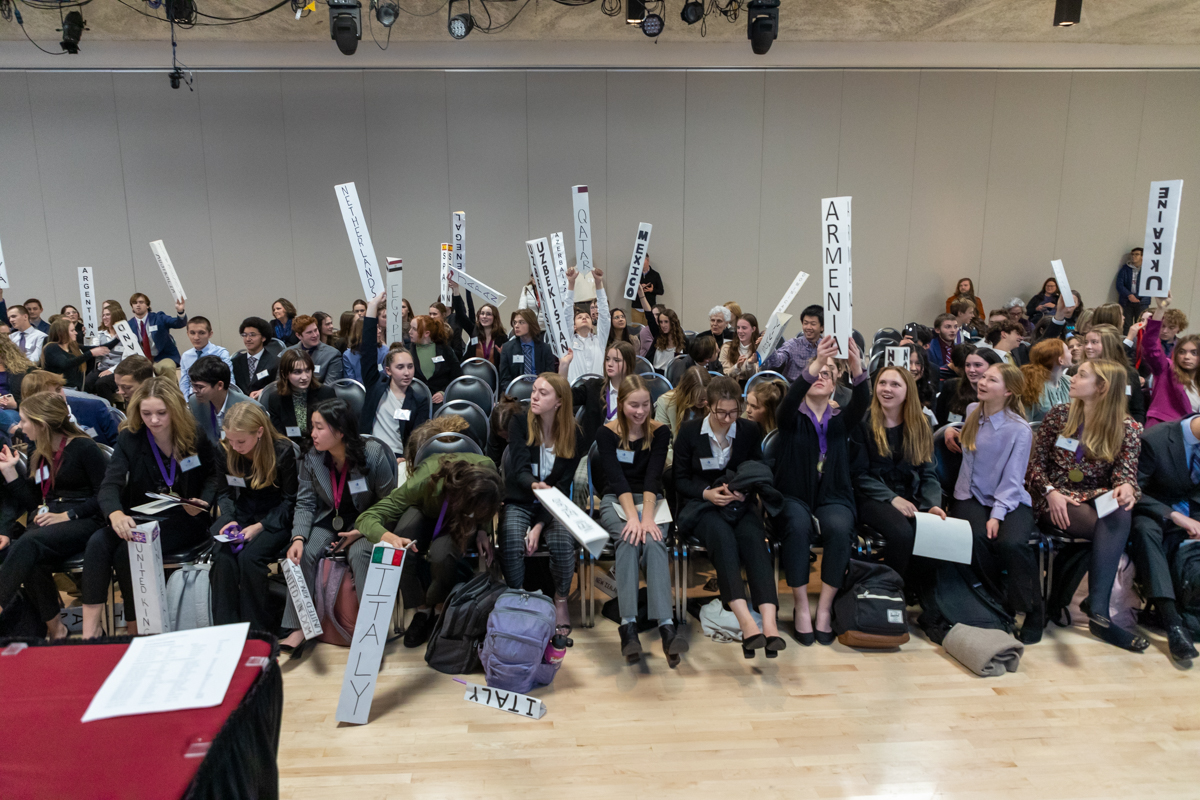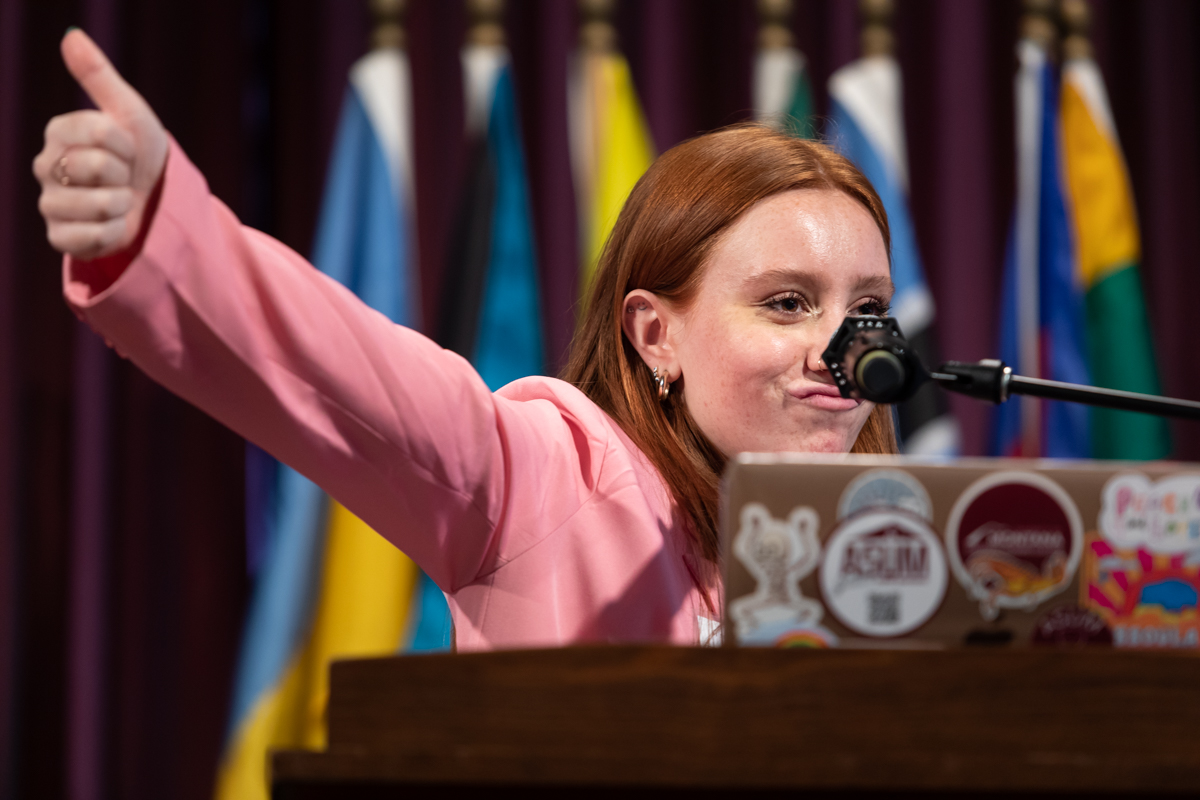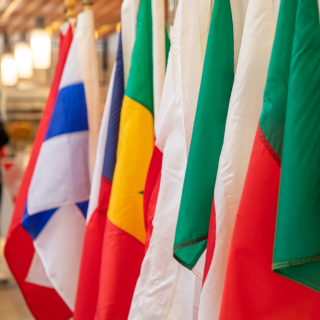What is Model United Nations?
Each year, The University of Montana sponsors the Montana Model United Nations High School Conference. In 2023, 13 schools and 275 students attended the two-day conference. Since the conference began in 1966, more than 12,000 Montana and Idaho high school students have attended Montana Model UN (MMUN).
At Model United Nations conferences, students “represent” countries from across the world. Like real-world diplomats, they participate in UN committees such as the General Assembly and Security Council. By writing, negotiating, and voting on resolutions, students learn to examine international affairs from different perspectives and experience what it is like to cooperate to solve to real-world problems.

Teachers prepare their students for the conference in a class or extracurricular club. Students research their countries and the issues before their committees, then write papers summarizing their countries’ positions. Students also practice conference skills such as public speaking, resolution writing, and parliamentary procedure.
Model UN conferences are peak academic experiences. They expose students to important international issues and challenge them to develop their research, writing, public speaking, and negotiation skills. In addition, Montana Model UN gives high school students a taste of university life. During the two-day conference, students eat on campus, meet UM students and foreign exchange students, and attend talks by UM faculty.
The MMUN High School Conference is held annually on the Monday and Tuesday before Thanksgiving. The conference consists of opening ceremonies, a series of committee sessions with faculty guest speakers, region night meetings with international students, and an awards ceremony.

UM students staff the committees and plan the conference with the assistance of a faculty advisor, and with funds from the University of Montana and the College of Arts and Sciences.
To participate, schools must register by early October of each year, with the opportunity to add additional students until early November.
